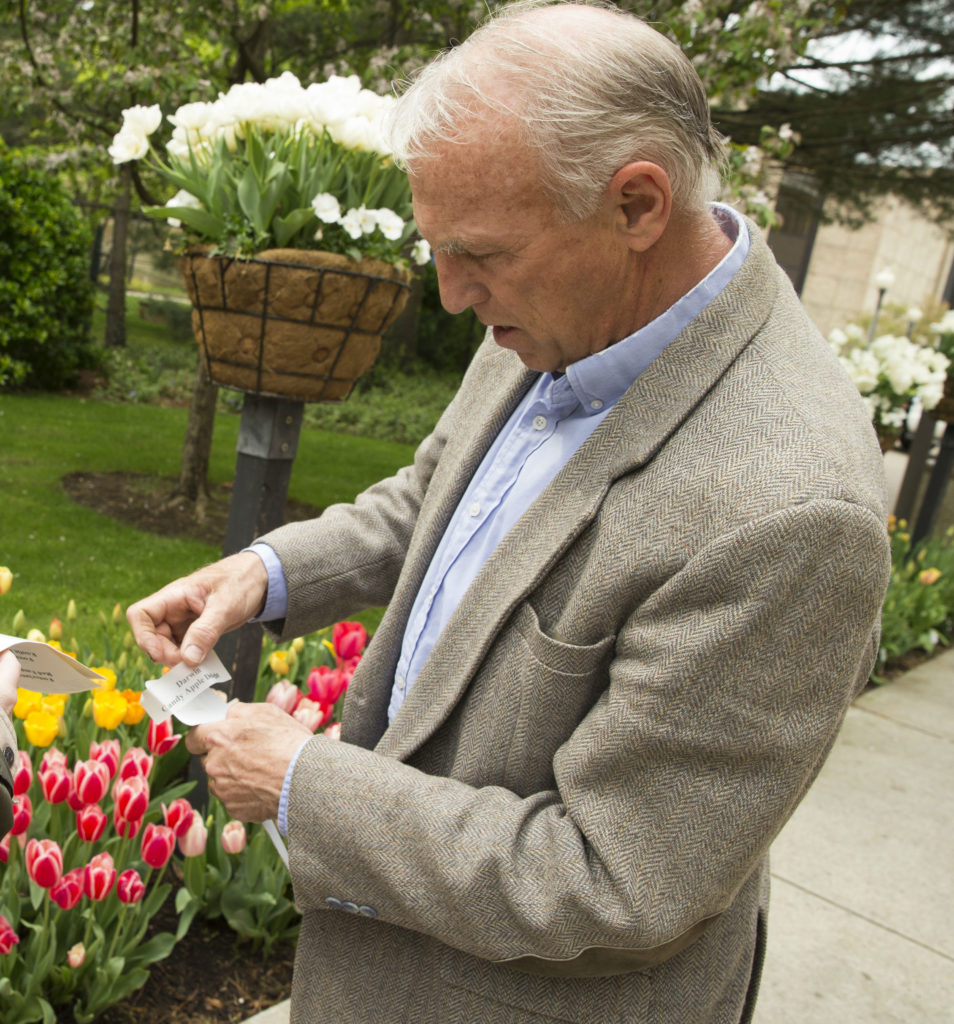
It’s no secret that walking around Hofstra’s campus is like strolling through a museum of living things. The arboretum trees look spectacular – whether you see them in blazing sunlight or buried under a foot of snow – and when the tulips bloom in the spring, Hempstead is transformed into Amsterdam. The landscaping is no accident; the Plant Department makes sure that each tree, shrub and flower is cared for on a daily basis. A 26-person staff makes the rounds to maintain and beautify almost every outdoor aspect of Hofstra’s campus.
The Plant Department is led by Fred Soviero, the director of Grounds and the Hofstra Arboretum. He’s celebrating his 30 year anniversary of working at Hofstra this week, and he knows just as much about gardening as Mother Nature. After majoring in ornamental horticulture at Farmingdale State College, Soviero worked at Adelphi before finding his home with the Pride.
“I wanted to grow plants for a living, just a grow and sell them kind of thing. Then I got into maintenance like lawn cutting and pruning … then I came here,” Soviero said. “It put everything I was learning in school together in one package. This place is moving and changing all the time.”
To get an idea of just how many living things are on campus (that aren’t people or cats), Soviero says there are about 12,000 trees and around 35,000 shrubs and bulbs. In addition to caring for them all, the Plant Department also manages all 250 acres of Hofstra’s property and the shared territory along Hempstead Turnpike and California Avenue. They do everything from clearing snow and cleaning up litter, to preserving the turf on the athletic fields.
Much like an interior designer would create a style for a room inside, Soviero and his team choose how the gardens and arboretum on campus will look. “You have to be kind of relentless,” Soviero said. “We make sure that the right kind of blooms go with the background plants and that they don’t clash … you look at sun exposure and the soil, which is the most important thing.”
The base of a new design is a conifer tree because they stay green year-round. “Students are here from August to May, so you’re really not here during the hot months of the summer. There are certain plants we don’t feature so much on campus because students are here in the fall and the spring,” Soviero said. “When we’re designing a new garden on Long Island, we’re thinking of plants that will live in zero [degrees] or even five below zero. If they’re evergreen, they’re here all winter long for [students] to enjoy.”
The trees and plants come from everywhere – the monkey puzzle tree is native to the mountains of Chile, and there are plants from all over Europe and Asia as well. The goal is to have as many as possible on campus, according to Soviero. “I try to pack in as many plants [as possible] so you guys walking from class to class see not just some pines and some grass. I’m trying to attract attention and have the students enjoy and learn, even if they just enjoy and don’t know the name of anything.”
And then, of course, there’s the tulips. A nod to Hofstra’s Dutch ancestry, Soviero debunked the myth that there’s a tulip on campus for each student. When the tulips are planted in the spring, about 50,000 to 60,000 go in the ground. With around 11,000 total students, it’s really more like five flowers for each.
“You walk out of admissions and in the first minute you’ve seen more than 13,000,” Soviero said. “It’s a nice way to promote a lot of attention and have a beautiful campus for spring, and also have something that’s very Dutch.”
The garden historian, Mac Griswold, calls gardening “the slowest of the performing arts,” and Soviero thinks it rings true. “It’s like a big show out there,” he said. “There’s so many changing parts … it always keeps you on your toes, there’s always something different. We do it for you, for the students.”


